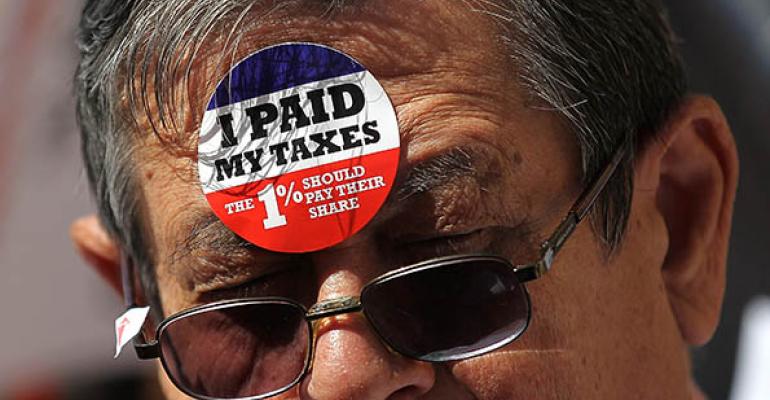
Where do people pay the highest federal taxes? Washington D.C., according to MoneyRates.com. The site calculated that residents of the District paid more than $8,000 in per capita taxes and had a weighted tax rate of 12.32 percent. Massachusetts, Connecticut and North Dakota rounded out the top four states with the highest federal tax burdens. Alternatively, the site reports Arkansas’ residents have the lowest tax burdens, paying $3,100.71 in per capita taxes, and also has a weighted tax rate of 10.81 percent.

Newbridge Securities stockbroker Irvin Rosenfeld, 62, smokes up to ten joints of marijuana a day, and uses a vapor inhaler in the office where he trades “tens of thousands of dollars” in stock and meets any one of his 250 clients. Rosenfeld has a rare medical condition that qualified him for an experimental federal program started in the 1970s that supplies him with the weed; the program was shut down by President George H. Bush, and Rosenfeld is one of only two people in the country still getting supplied. He says his clients are fine with it. According to the L.A. Times: “Every one of Irvin Rosenfeld's 250 clients at the investment firm Newbridge Securities knows he's a pot smoker, he said. He brings it up by asking them whether they know anybody who has taken on the federal government and won. He tells them he has, and promises to use that same gumption in making them money.”

The U.S. Bureau of Labor Statistics expects the number of financial advisors to grow 32 percent by 2020, and much of that will come in the form of dually registered, or hybrid, RIAs. Cerulli Associates predicted that hybrids would manage 28 percent of assets by the end of 2018, up from 20 percent in 2013. Part of the growth, according to CNBC, is increased client demand for RIAs to hold to a fiduciary standard, as well as large firms relying less on the broker-dealer side of their practice.




